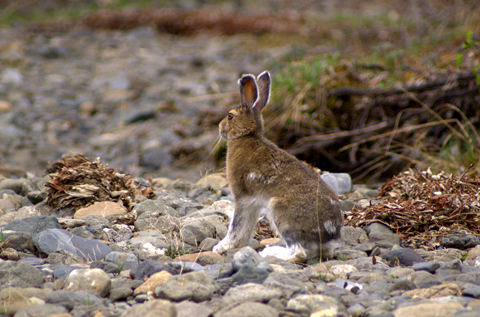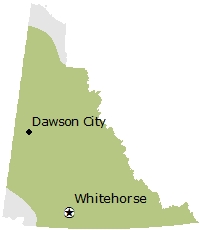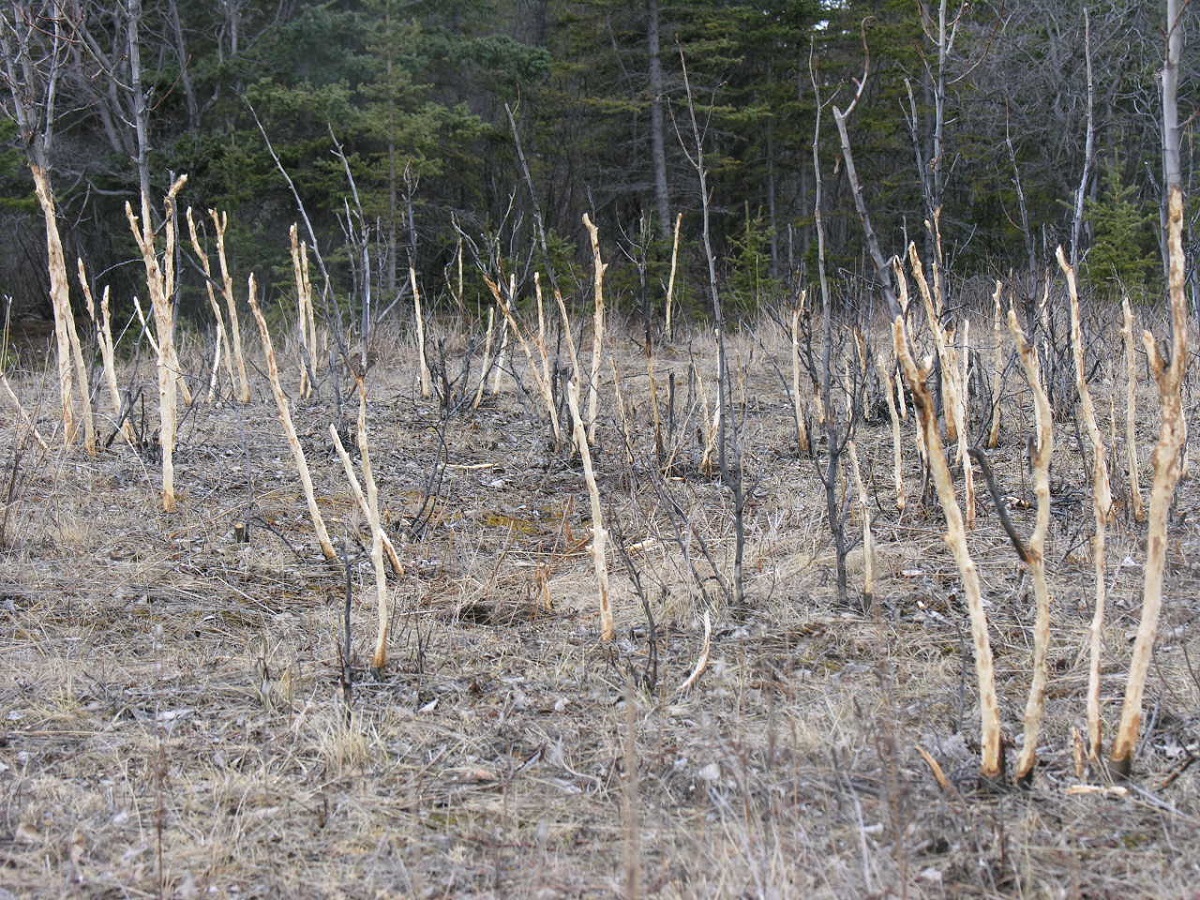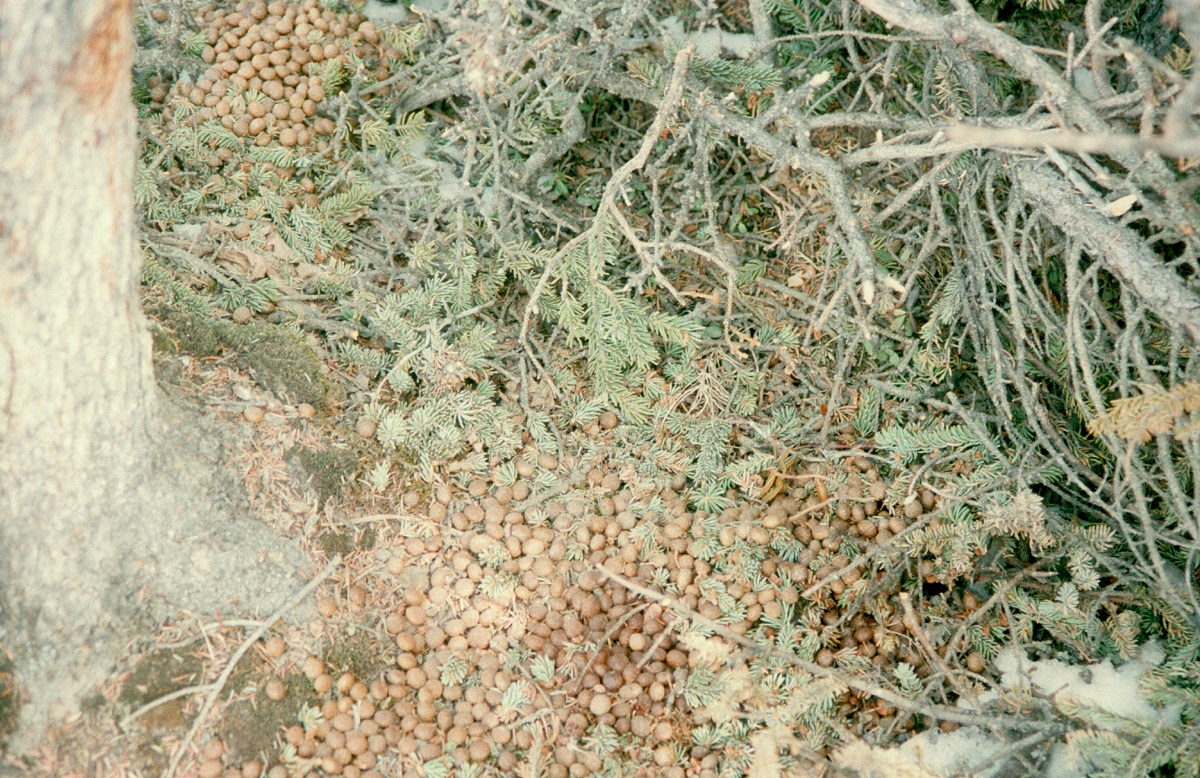
Credit: Gerry Mussnug
Name
- Common name: Snowshoe Hare
- Scientific name: Lepus americanus
- Order: Lagomorpha
- Family: Leporidae
Also known as
Rabbit, Bunny
Viewing opportunities
- Forest edges are good places to look for hares, especially in spring and autumn when their colouration may not match snow conditions.
- Look for them under a deadfall or at the base of a tree.
- Hares often feed in roadside ditches at dusk in the summer.
- Hare tracks are highly visible in winter and the density of these can help you find good places to look for them, particularly along their pathways.
Description
- Very broad hind feet and large ears.
- Winter: white fur with black-tipped ears.
- Summer: Rusty or dark brown fur with white underparts.
- Rear limbs much longer than front ones.
Fast facts
- Length: 0.5 m
- Weight: 1 to 2 kg
- Lifespan: 1 year
- Predators: All carnivorous mammals and raptors.
- Habitat: Boreal Forest
Conservation status
- Yukon: S5 (Secure)
- Global: G5 (Secure)
Yukon population estimate
Not determined.
Behaviour
Snowshoe Hares are active primarily at dawn, dusk and during the night. They rest in shallow depressions called forms, which may be tucked beneath a snow-laden branch or deadfall. They are casual parents. The male does not care for the young at all and the female visits her young as little as once a day to feed them. In the Yukon, Snowshoe Hares have up to 4 litters between May and September, twice as many as in some southern regions.
Diet
Grasses, buds, bark
Distribution

Sights and sounds

Snowshoe Hare track: 11.3 x 9.4 cm.

Chewed bark.

Pellets: 0.8 cm.
Hares and people
- Snowshoe Hares have always been an important food source for Yukoners in remote areas and are still our most popular small game species.